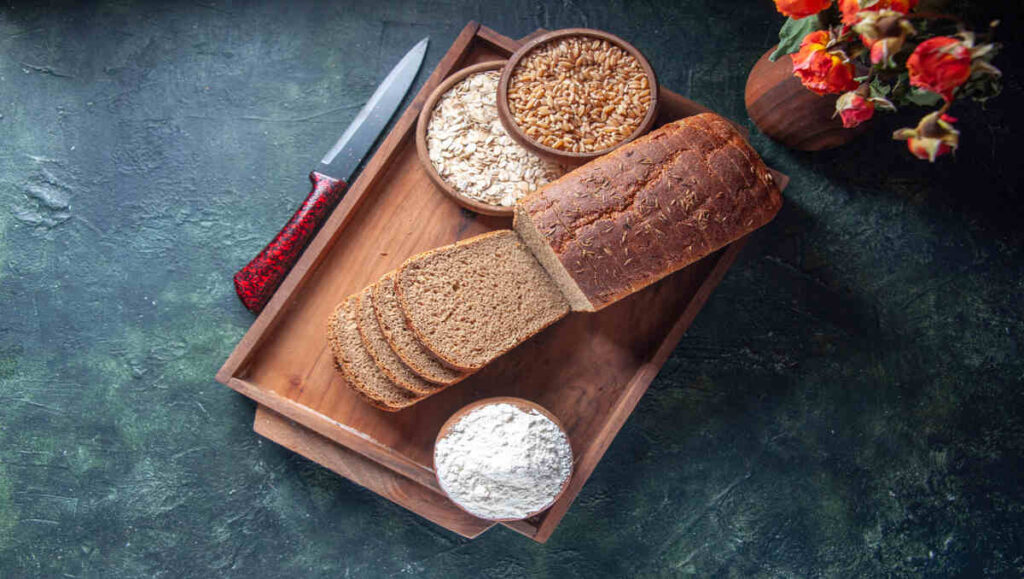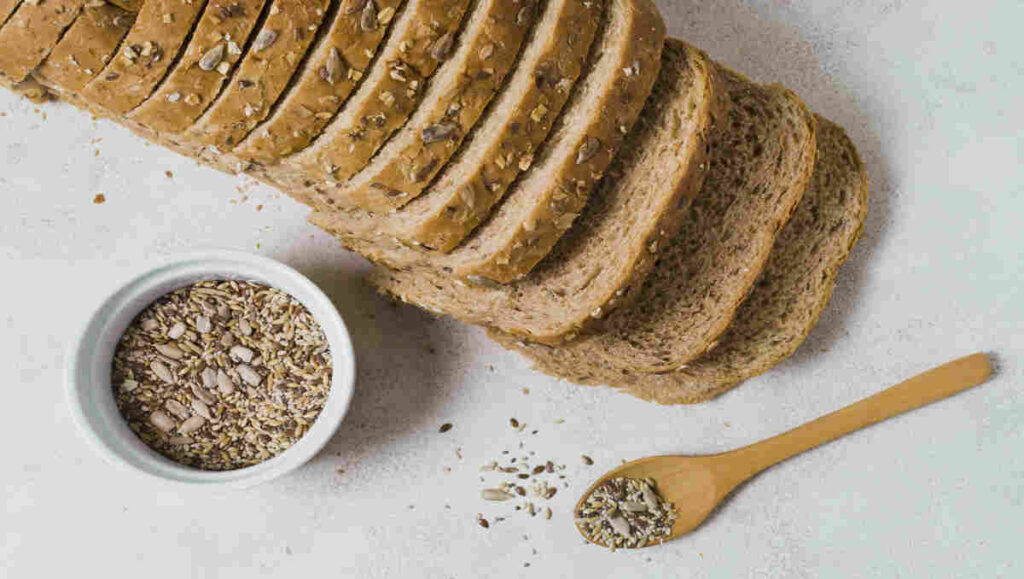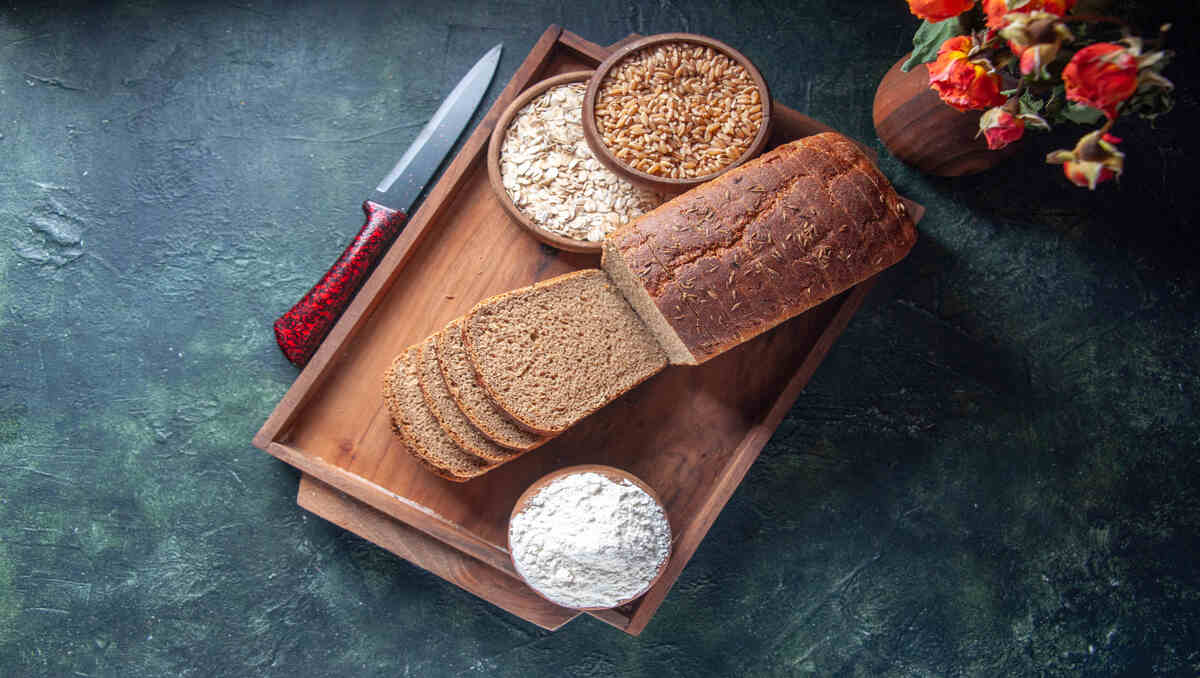Introduction
Sugar-Free Bread Recipe is a staple food in many households, but store-bought versions often contain hidden sugars that can negatively impact health. Whether you’re managing diabetes, following a low-sugar diet, or simply making healthier choices, a sugar-free bread recipe is a great alternative. This article will guide you through everything you need to know about making homemade sugar-free bread, from its origins to step-by-step preparation, health benefits, and the best way to serve it.
What is Sugar-Free Bread Recipe?
Sugar-Free Bread Recipe is a type of bread that does not contain added refined sugars, artificial sweeteners, or high-fructose corn syrup. Instead, it relies on natural ingredients like whole grains, nuts, and seeds to enhance flavor and texture. Some recipes may use natural sugar substitutes such as stevia or monk fruit, but traditional sugar is entirely omitted.

The Origin of Sugar-Free Bread Recipe
Bread-making dates back thousands of years, long before refined sugar was introduced. Ancient civilizations, including the Egyptians and Mesopotamians, made bread using simple ingredients like flour, water, and natural fermentation. Over time, as sugar became widely available, it was added to enhance taste and texture. However, modern health trends have led to a resurgence of traditional, sugar-free bread recipes, making them popular among health-conscious individuals.
Essential Ingredients for Sugar-Free Bread Recipe
To make delicious and healthy sugar-free bread, you’ll need the following ingredients:
- Whole Wheat Flour or Almond Flour – Provides fiber and nutrients.
- Yeast – Helps the bread rise naturally.
- Warm Water or Milk – Activates the yeast.
- Olive Oil or Coconut Oil – Adds moisture and improves texture.
- Salt – Enhances flavor.
- Eggs (optional) – Adds protein and structure.
- Flaxseeds or Chia Seeds (optional) – Boosts nutrition and fiber.
- Natural Sweeteners (Optional) – If needed, use honey, stevia, or monk fruit in minimal amounts.
Optional Additions for Flavor
- Herbs (Rosemary, Basil, Thyme) – Adds a unique taste.
- Nuts & Seeds (Sunflower Seeds, Walnuts, Almonds) – Provides crunch and extra nutrients.
- Cinnamon or Nutmeg – Gives warmth and depth of flavor.
Essential Equipment
To ensure a smooth baking process, gather these essential tools:
- Mixing Bowls – For combining ingredients.
- Measuring Cups & Spoons – Ensures accuracy.
- Whisk or Spoon – To mix the dough.
- Stand Mixer (Optional) – Helps knead the dough efficiently.
- Bread Loaf Pan – Shapes the bread.
- Oven – For baking.
- Cooling Rack – Prevents soggy bread by allowing air circulation.
Step-by-Step Sugar-Free Bread Recipe
Step 1: Activate the Yeast
- In a small bowl, mix ½ cup of warm water (around 110°F) with 1 packet (2 ¼ tsp) of yeast.
- Let it sit for 5-10 minutes until it becomes frothy, indicating the yeast is active.
Step 2: Prepare the Dough
- In a large mixing bowl, combine:
- 3 cups of whole wheat flour or almond flour.
- 1 teaspoon salt.
- 2 tablespoons olive or coconut oil.
- Optional: 1 teaspoon flaxseeds or chia seeds for added fiber.
- Slowly pour in the activated yeast mixture and ½ cup of warm water while mixing.
- Knead the dough for 8-10 minutes until it becomes smooth and elastic.
Step 3: Let the Dough Rise
- Place the dough in a greased bowl, covering it with a cloth.
- Let it rise in a warm place for 1-2 hours until it doubles in size.
Step 4: Shape & Second Rise
- Punch down the dough and shape it into a loaf.
- Place it in a greased bread pan and let it rise for another 30-45 minutes.
Step 5: Bake the Bread
- Preheat the oven to 375°F (190°C).
- Bake for 30-35 minutes or until golden brown.
- Remove and let it cool on a rack for at least 20 minutes before slicing.
Health Benefits of Sugar-Free Bread Recipe
✅ Supports Blood Sugar Control
- Unlike refined bread, sugar-free bread prevents blood sugar spikes, making it ideal for diabetics.
✅ Rich in Fiber
- Whole grain or almond flour increases fiber intake, promoting better digestion and gut health.
✅ Aids in Weight Management
- Sugar-free bread is lower in empty calories, helping with weight control.
✅ Heart-Healthy
- Contains healthy fats from olive oil or coconut oil, which can support heart health.
Additional Tips for Perfect Sugar-Free Bread Recipe
- Use high-quality flour – Whole wheat or nut-based flours work best.
- Don’t rush the rise – A slow rise enhances texture and flavor.
- Add moisture – If your bread is dry, mix in a little extra oil or yogurt.
- Experiment with flavors – Add herbs, seeds, or nuts for variety.
Best Way to Serve Sugar-Free Bread Recipe
- Toasted with Avocado & Eggs – A healthy breakfast option.
- With Peanut Butter & Banana – A delicious energy-boosting snack.
- As a Sandwich Base – Perfect for turkey, tuna, or veggie sandwiches.
- With Homemade Sugar-Free Jam – A sweet but healthy treat.

Nutritional Information (Per Slice, Approximate)
| Nutrient | Amount |
| Calories | 90-120 |
| Carbohydrates | 15g |
| Protein | 5g |
| Fiber | 3g |
| Fat | 4g |
| Sugar | 0g |
Preparation & Cooking Time
| Step | Time Required |
| Preparation | 20 minutes |
| First Rise | 1-2 hours |
| Second Rise | 30-45 minutes |
| Baking Time | 30-35 minutes |
| Cooling Time | 20 minutes |
| Total Time | 2.5 – 3 hours |
Conclusion
Making homemade sugar-free bread is easier than you think! By using simple ingredients and natural techniques, you can enjoy a delicious, healthy alternative to store-bought bread. Not only does it help with weight management, blood sugar control, and heart health, but it also allows you to customize flavors to your liking. Try this recipe today and experience the joy of baking your own nutritious bread at home!
FAQs
1. Can I make this bread without yeast?
Yes! You can substitute yeast with baking powder or baking soda combined with yogurt for a quicker, yeast-free version.
2. How do I store sugar-free bread?
Store it in an airtight container at room temperature for up to 3 days or refrigerate for a week. You can also freeze slices for up to 3 months.
3. Can I make this bread gluten-free?
Absolutely! Use almond flour, coconut flour, or a gluten-free flour blend instead of wheat flour.
4. Why is my bread dense and not fluffy?
A dense texture is often due to over-kneading, expired yeast, or not enough rising time. Ensure your yeast is active and let the dough rise properly.
5. Can I add natural sweeteners?
Yes! If you prefer a slight sweetness, use honey, mashed bananas, or stevia in small amounts.
Enjoy baking and stay healthy! 😊
